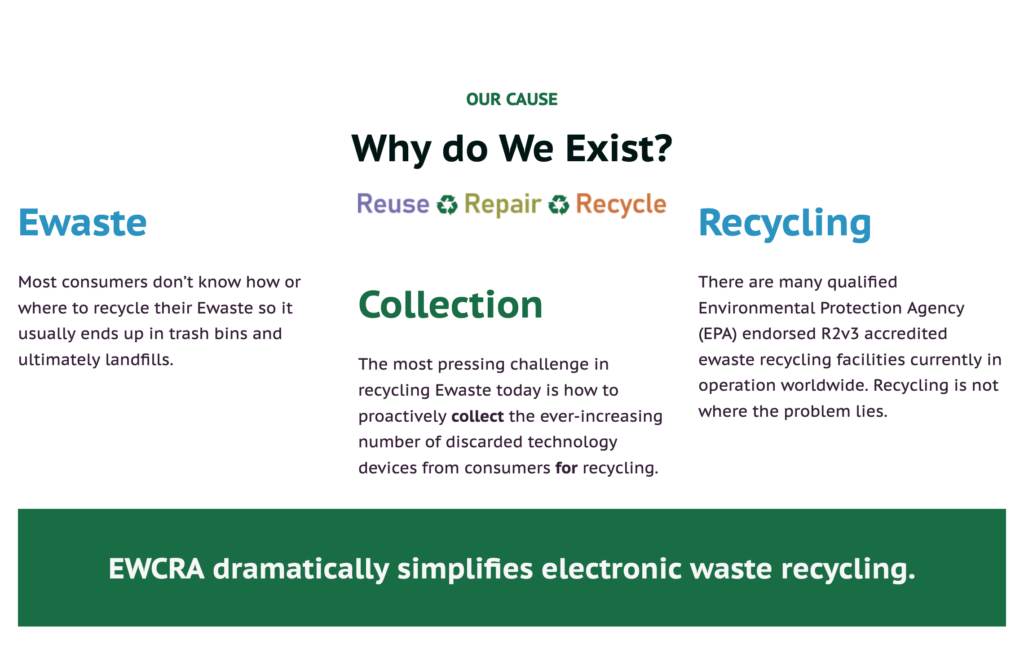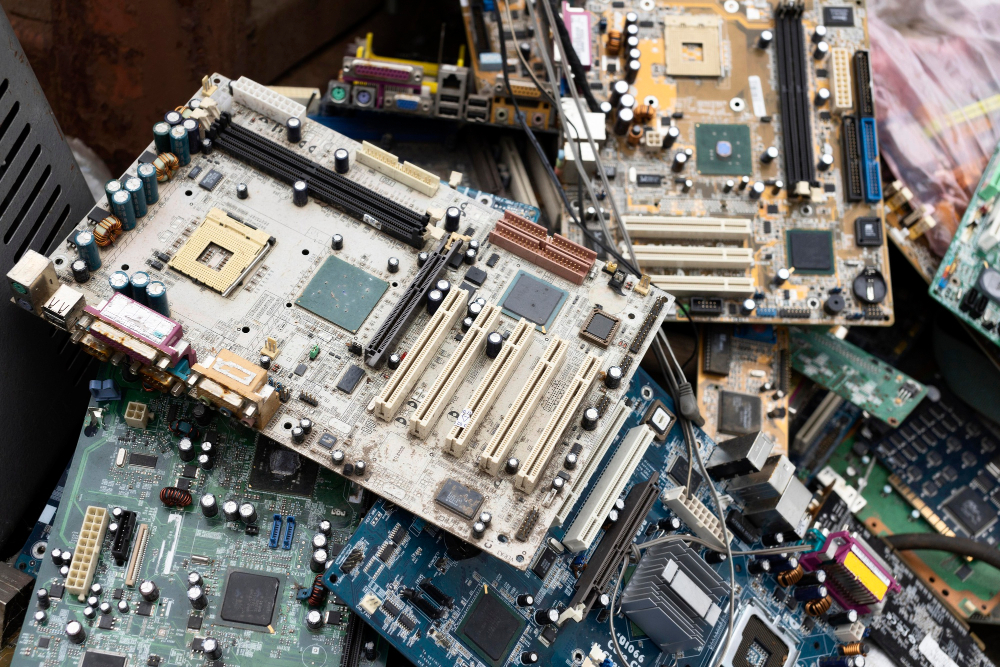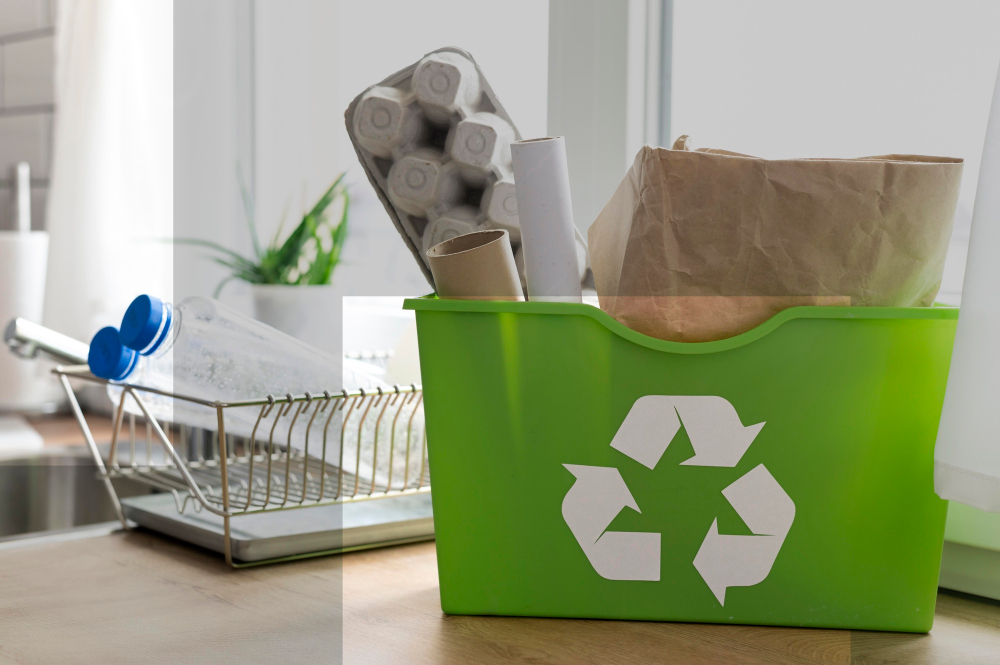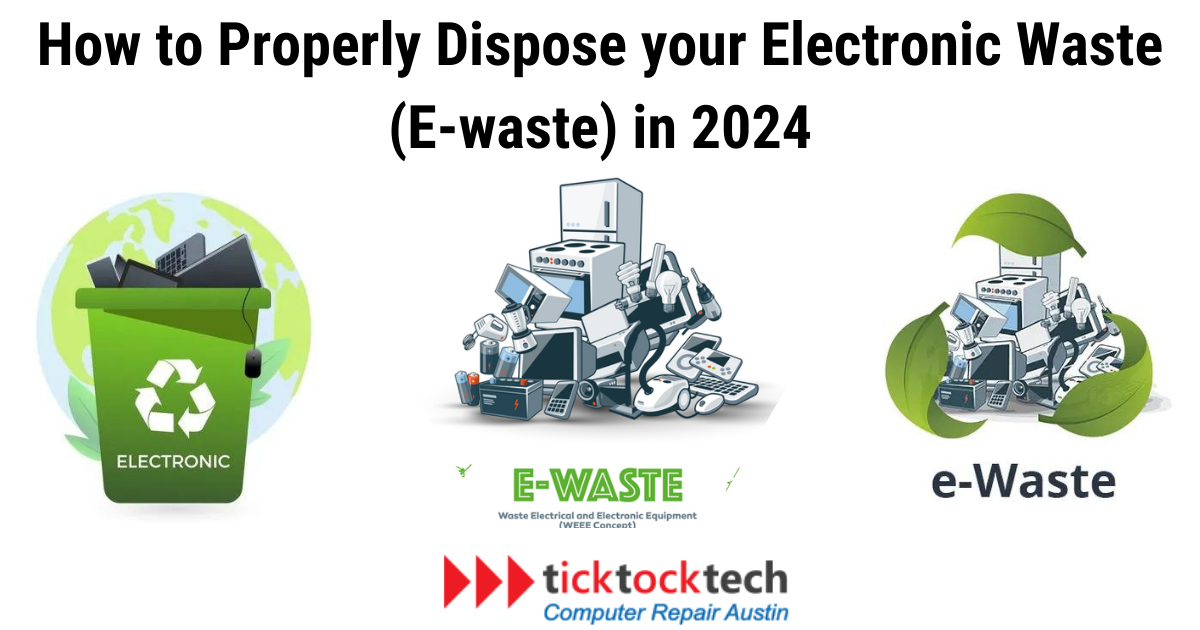When an electronics gets damaged, beyond repair, or gets too old, then it is time for disposal. Many people, just leave it in a box at home, some dump it in their garage, while many others dump it in the refuse or waste bin. These electronic devices however do not belong anywhere near an open environment. Their materials are mostly non-degradable, and it is a fact they are harmful to the environment and climate. If you are thinking of leaving your e-waste or old electronics around the house, or at the refuse dump, DON’T, Here are ways to properly dispose of your E-waste in 2024.
Related: Which Renewable Energy Source is Used the Most in the United States?
1. Return to Manufacturers
Returning your end-of-life (EOL) electronics to the company that manufactured them is a wise decision. Several manufacturers have their recycling programs where they provide a trade-in option for upgrading to a newer model at a discounted price. This approach not only guarantees the proper recycling of your device but also promotes sustainable consumer behavior by prolonging the lifespan of electronics.
2. If the Device Is Still Working, Donate Them
Donating functional old devices can give them a fresh start. Schools, local governments, and universities are often grateful to receive technology donations. Typically, these institutions have designated schedules and locations for accepting such donations. When you donate, you are not only making a positive impact on education and community development, but you are also playing a crucial role in reducing electronic waste and its harmful effects on the environment.
3. Local E-waste Collection Company
Consider reaching out to local e-waste collection services that have expertise in managing electronic waste. These companies prioritize the responsible disposal or recycling of e-waste to minimize environmental impact. By utilizing local e-waste services, you can contribute to the well-being of your community and help protect the environment by ensuring compliance with proper disposal regulations. In the United States, a new E-waste collection organization is operating in local areas. EWCRA collects your e-waste from your home and takes it for sorting and recycling. Even if it’s challenging for you to take them to recycling, they come to you and pick them up. Dispose e-waste responsibly
Related: Sustainability Tech at CES 2024
4. Send E-waste to Local Recycles
Look for recyclers that have been certified by well-known organizations such as the Basel Action Network. These recycling centers are committed to maintaining high environmental standards, ensuring responsible processing of your e-waste. Supporting these centers is crucial for reducing the release of harmful substances into the environment and promoting sustainability.
5. Remarketing Options
Utilizing platforms such as Facebook Marketplace, eBay, and Craigslist can be a highly effective method for breathing new life into your old electronics. Not only does this result in a modest return on your initial investment, but it also helps to avoid functional devices from becoming waste. The process promotes a circular economy, which helps decrease the need for new products and minimizes the environmental impact linked to electronic waste.
What are Electronic Wastes?
Electronic waste, or e-waste, is defined as discarded electrical or electronic devices. These include items that have reached the end of their useful life, whether broken, unwanted, or obsolete. Common household e-waste includes a wide range of items, from large appliances like dishwashers and electric stoves to smaller devices like smart phones and electric toothbrushes. Notably, the United States Environmental Protection Agency (EPA) separates e-waste into categories such as IT equipment, consumer electronics, and large household appliances.
E-waste is recognized as the world’s fastest-growing waste stream, with a significant portion ending up in landfills or being informally recycled. According to reports, approximately 80% of e-waste was disposed of improperly in 2017. Furthermore, the volume of e-waste is staggering, with over 44 million metric tons generated each year. Small and large home appliances account for approximately 60% of this waste. Meanwhile, ICT equipment, which includes laptops and smartphones, is the fastest-growing sector of e-waste.
Alarmingly, the toxic chemicals in e-waste pose serious threats to both the environment and human health, as they can leach into soil and water. Addressing e-waste challenges necessitates effective disposal, recycling, and management strategies to mitigate its negative effects.
To properly dispose of your electronic waste while taking into consideration, environmental sustainability. Let’s explore some of the best ways to properly dispose of your Electronic waste in 2024.
The Stages of E-waste Management
Before the E-waste becomes environment friendly material, there are stages of activities they go from. Right from the owner to the collection point, transporting, sorting, Data destruction,
Recycling, Residue disposal, and Repurposing
Stage 1: E-waste Collection and Transportation
The process of e-waste management begins with the collection and transportation of discarded electronic items from homes, offices, and collection points to facilities for processing. This step is critical for preventing illegal dumping and ensuring that e-waste goes through the proper recycling stream. Safe transportation reduces the risk of environmental contamination.
Stage 2: Sorting
When e-waste arrives at the recycling center, it is divided into several categories. This separation is determined by the type of material and the method of disposal. Efficient sorting is critical for maximizing the recovery of valuable materials and ensuring that each component is treated properly.
Stage 3: Data Destruction
Data destruction is an important step for devices that store sensitive or personal information, such as computers and smart phones. This process entails securely erasing or physically destroying storage devices to prevent data breaches. It is critical for ensuring your privacy and security.

Stage 4: Recycling
Recycling is the process of separating and recovering useful materials from electronic waste, such as metals, plastics, and glass. The materials are then processed and used to create new products. Recycling reduces the demand for new raw materials, saves energy, and lowers pollution.
Stage 5: Eco-Friendly Residue Disposal
Not all types of e-waste can be recycled. The residue that cannot be further processed is disposed of in an environmentally responsible manner. This frequently includes treating materials to remove or neutralize hazardous substances before disposal. Advanced techniques, such as encapsulation or secure landfilling, prevent these substances from harming the environment.
Stage 6: repurposing
Repurposing is the process of reusing functional e-waste components. This may include refurbishing devices or salvaging components for use in other products. Repurposing extends the life of electronic goods, reduces the need for new ones, and promotes a circular economy.
Each stage to dispose e-waste and proper management contributes significantly to reducing the environmental impact of discarded electronics. When executed correctly, these steps can significantly reduce pollution, conserve resources, and protect human health.
E-waste’s impact on the environment (environmental risk)
The proliferation of e-waste, which includes common household items such as smartphones, laptop computers, and large appliances, poses a significant environmental risk. While modern electronics are generally safe to use, they do contain hazardous materials like beryllium, cadmium, mercury, and lead.
When these substances are improperly disposed of, they can leach into the soil and water, causing significant contamination. This leaching process introduces toxic materials into groundwater, which harms both aquatic and terrestrial life.

The World Health Organization emphasizes the risks associated with direct contact with these toxins, which can accumulate in soil, water, and food, endangering the health of humans and animals alike.
With an estimated 44 million metric tons of e-waste generated each year, the challenge is growing. Notably, approximately 80% of this waste ends up in landfills or is informally recycled, often in developing countries, exacerbating health and environmental issues.
Improving Environmental Sustainability through Proper E-waste Disposal
To combat the harmful effects of e-waste on the environment, a comprehensive disposal strategy is required. This includes refurbishing and reselling older electronics, which extends their lifecycle and reduces waste.
Recycling is essential, with certified recyclers using environmentally friendly methods to recover valuable materials and reduce the release of hazardous substances. The Basel Action Network’s certification of recyclers ensures compliance with best practices in e-waste management.

However, only 17% of e-waste is properly collected and recycled. There is an urgent need for better waste management policies and public awareness. EWCRA is currently emerging to fill those gaps, going house to house, office to office, and garage to garage to get your E-waste recycled. Security concerns, such as data breaches caused by improperly discarded devices, add to the complexity, emphasizing the importance of secure data destruction.
We can significantly reduce environmental risks and contribute to a more sustainable future. By focusing on responsible ways to dispose e-waste , utilizing certified recycling centers, and adopting a circular economy approach.
Conclusions
Managing e-waste becomes increasingly important as we embrace rapid technological advancements. E-waste disposal and recycling protect the environment and public health and conserve resources. Individuals and communities can reduce the environmental impact of e-waste by returning outdated electronics to manufacturers, donating working devices, using local e-waste collection services, using certified recyclers, and looking into remarketing options. These actions and the structured stages of e-waste management from collection to repurposing demonstrate a all around approach to environmental sustainability. E-waste remains a major issue, so adopting such practices ensures a future where technological progress and environmental preservation coexist.

